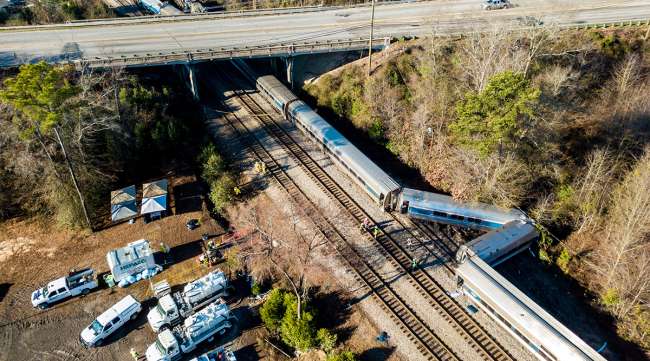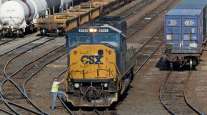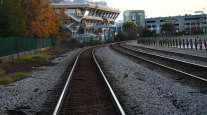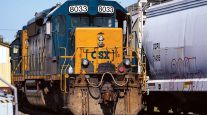Amtrak Crash Adds to CSX’s Rising Accident Toll

A fatal crash of Amtrak and CSX Inc. trains Feb. 4 raises concerns about whether the freight railroad’s massive operations overhaul might have compromised safety and contributed to a rise in accidents.
An aggressive turnaround plan at CSX has disrupted service, angered customers and drawn scrutiny from regulators during the past year. The company saw more upheaval in December when its CEO and architect of the strategy died suddenly.
“If this happens again anytime soon, there will begin to be questions asked whether there is something more systemic in play here,” said Rick Paterson, an analyst with Loop Capital Markets. But he cautioned that it’s too early to make a judgment about what happened until an official investigation is completed.
CSX’s accident rate, based on train miles traveled, has been rising the past three years, according to the Federal Railroad Administration. The rate jumped 13% in the first eleven months of 2017, the second-worst record among the seven largest railroads in North America.
There should be no connection made between Sunday’s accident and CSX’s operations overhaul, spokesman Bryan Tucker said Feb. 5.
Off Track
CSX fell 3% Feb. 5 to $53.57 at 2:24 p.m., compared with a 1.1% decline in the Standard & Poor’s rail index, which includes the four largest publicly traded U.S. railroads. CSX shares had risen 0.4% this year as of the close Feb. 2.
Worried Investors
“The fact that CSX stock is materially lower than all of its railroad peers today suggests that investors may be concerned about a potential link between a major accident and the significant operational disruption that has occurred at CSX over the last 11 months,” Paterson said.
New CEO Jim Foote inherited the top job less than two months after joining the company as Hunter Harrison’s heir apparent. The ailing 73-year-old Harrison, known for his successful transformations of three previous railroads, had fast-tracked the turnaround process after joining CSX in March.
Two people were killed and more than a hundred injured on Sunday when an Amtrak train in South Carolina was mistakenly switched to a side rail and smashed into a CSX train. CSX owns the track and is responsible for overseeing rail traffic at the site.
Other Accidents
The Feb. 4 crash followed the derailment in August when a CSX train hit a bulldozer parked on the tracks in South Carolina’s Kershaw County. The incident was “clearly a case of sabotage,” Harrison told analysts. Another derailment in August triggered an evacuation in Pennsylvania because of hazardous materials being transported.
In June, two CSX workers were struck and killed by an Amtrak train in Washington while they were conducting inspections of freight cars. Another CSX train derailed and crashed into a residence in Atlanta in October, injuring a man in the home.
Service disruptions from Harrison’s overhaul caught the eye of authorities last year after shippers began complaining about delays. The Surface Transportation Board in July requested weekly calls with CSX management on service and held a listening session in October to hear complaints and the railroad’s response.
The issues stem from the dramatic changes to CSX’s operations Harrison rammed through in nine months — a process that required several years for his previous railroad turnarounds. Harrison declared that the service snags were mostly resolved in October and the complaints subsided.
Workforce Toll
The turnaround disruptions have also been hard on CSX’s workforce, which was cut by 12% amid the shutdown of rail yards and parking of locomotives. Harrison pushed out his chief operating officer and chief of sales in October for not fully embracing his strategy, and hired Foote, who was sales chief under Harrison at Canadian National Railway Co.
Some of CSX’s employee tensions became public when Harrison said in an October conference call that he had to fire several employees for falsifying records on rail car movements.
CSX’s rate of reported employee injuries, based on hours worked, rose to 1.21 for the first 11 months of last year from 1.07 in 2016, according to railroad administration data.
With assistance by Ryan Beene




